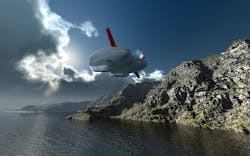How will we travel the world in 2050?
GLASGOW, UK - If the aviation industry was a country, it would rank among the world’s top ten emitters of carbon dioxide (CO₂). Aviation emissions have risen by 70% since 2005 and as demand increases in rich and poorer countries, they’re forecast to increase by between 300% and 700% by 2050, write UK-based academics John Grant and Keith Baker for TheConversation.com. Continue reading original article
The Intelligent Aerospace take:
August 14, 2019-Climate activists in Sweden have made "flygskam" - literally "flight shame" in Swedish - not only a word, but a movement of people shunning flying because of the ecological impact. However, as more people can afford air travel, the number of passengers flying per year has gone up. Academics Grant and Baker explore how emissions can be cut and what flight may look like in a few decades.
One proposal is a frequent flyer "tax" or a cap-and-trade type plan where people can buy flight "credits" from people who aren't planning on flying. Likewise, the duo discuss electric airplanes, including Eviation's "Alice" electric plane which was unveiled at this summer's Paris Air Show. While Grant and Baker write about bringing back slow moving but interesting air ships, they look to the future with an orbital ring set up wherein a rotating ring 80 km above earth can transport passengers to the other side of the planet aboard a train in less than an hour.
Related: Air travel emissions are high, and only getting worse
Jamie Whitney, Associate Editor
Intelligent Aerospace
